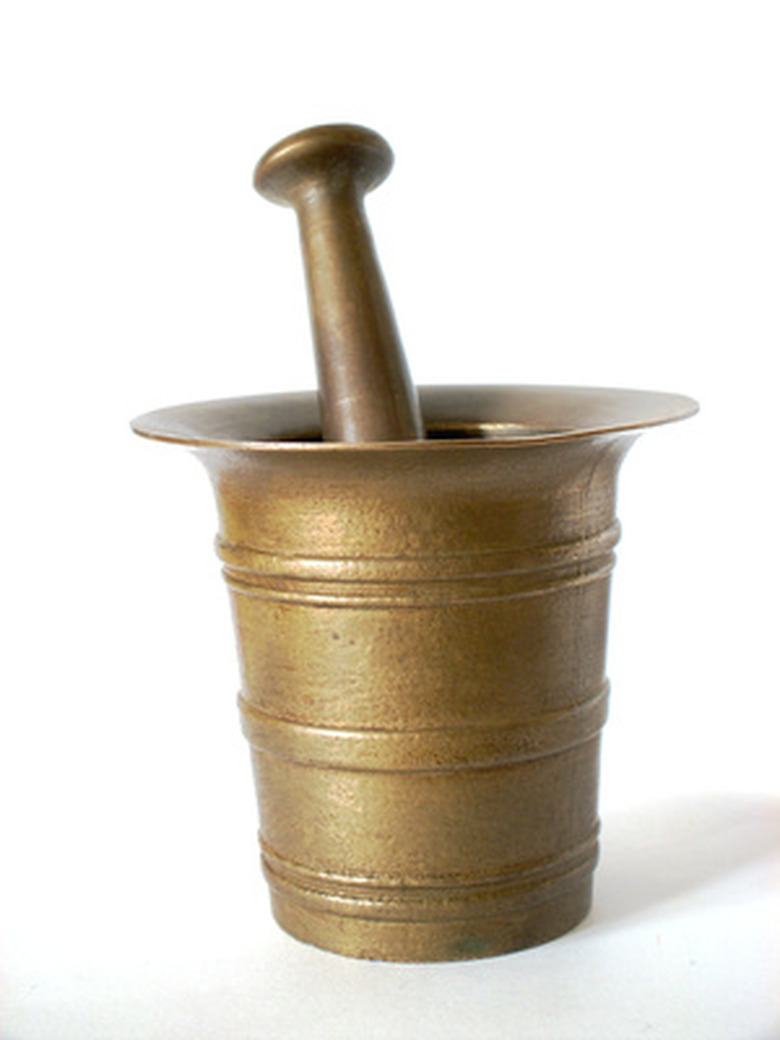Techniques For Copper Plating With Copper Sulfate Solution
There are two main ways to electroplate an object with copper. The first method uses a copper anode to transfer copper to a non-copper cathode, coating it in a thin layer of copper. Alternatively, anodes and cathodes of other metals can be used in a copper sulfate solution to take copper from the solution and plate the cathode. Copper electroplating is used in a variety of practical and ornamental applications.
Copper Electroplating Basics
Copper Electroplating Basics
In its most basic form, copper electroplating uses electrical current to transfer copper from a copper cathode via electrolysis to the anode, made of another metal. This requires an electrolyte solution to happen efficiently, such as salt water or a copper sulfate solution. It is important to conduct electroplating under suitable lab ventilation to prevent toxic fume inhalation, which can occur with some electrolyte solutions, particularly those containing salts, which may break down into chlorine gas.
Using Copper Sulfate In Copper Plating
Using Copper Sulfate In Copper Plating
Copper sulfate allows the electroplating technician to harness the elemental copper within the copper sulfate rather than using a copper anode itself for the task. This is particularly helpful for direct applications in laboratories where more than one type of electroplating is frequently taking place, and it is inconvenient to switch anodes; it is usually simpler to use a new electrolyte solution. During the electrolysis process, copper atoms leave the copper sulfate solution and form a coating on the anode, leaving sulfur residue in the electrolytic solution. Given the stable and readily available nature of copper sulfate, it makes an inexpensive school laboratory material and eliminates the chlorine gas risk associated with electroplating solutions.
Technique Tips for Copper Plating in a Copper Sulfate Solution
Technique Tips for Copper Plating in a Copper Sulfate Solution
Techniques using the process of copper plating with a copper sulfate solution relate to choosing an ideal water to copper sulfate ratio. The amount of copper sulfate in the solution is limited by the water saturation capacity, so once the solution is mixed in and the water no longer causes it to dissolve and instead causes it to settle to the bottom of the vessel, maximum saturation has been achieved. After achieving maximum saturation, the only other controllable variable is the amount of electrical current used to facilitate the electroplating reaction. It is important to err on the side of caution when choosing the level of electrical current for copper plating, since smaller apparatuses and higher voltages can lead to a violent reaction. To test the safe limit of your apparatus, slowly raise the power flow until the bubbling causes vibrations and back down slowly until it is reacting stably once again.
References
- The Woodrow Wilson National Fellowship Foundation: The Chemistry of Copper Plating
- Think and Tinker Ltd: Acid Copper Electroplating – Cu Plating Baths and Consumables
- Rishabh Intermediates: What is Copper Sulphate?
- United States Environmental Protection Agency: Electroplating
- United States Environmental Protection Agency: Final Report
Cite This Article
MLA
Mueller, Daniel R.. "Techniques For Copper Plating With Copper Sulfate Solution" sciencing.com, https://www.sciencing.com/techniques-plating-copper-sulfate-solution-7662531/. 24 April 2017.
APA
Mueller, Daniel R.. (2017, April 24). Techniques For Copper Plating With Copper Sulfate Solution. sciencing.com. Retrieved from https://www.sciencing.com/techniques-plating-copper-sulfate-solution-7662531/
Chicago
Mueller, Daniel R.. Techniques For Copper Plating With Copper Sulfate Solution last modified March 24, 2022. https://www.sciencing.com/techniques-plating-copper-sulfate-solution-7662531/
